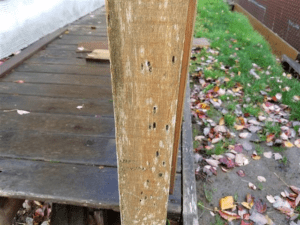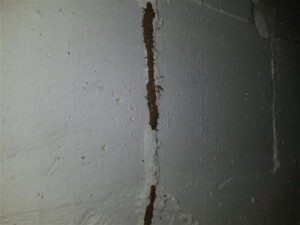
Wood destroying organisms.
Pests are a common problem for homeowners across the country and can come in many different forms such as mice, rats, raccoons, spiders, snakes, and wasps. However, there is a group of pests that can cause significant structural damage and directly impact the structure of a home. This group of pests are broadly classified as Wood Destroying Organisms.
Wood Destroying Organisms (WDOs) are organisms that impact the structural integrity of wood. These include carpenter ants, termites, wood-boring beetles, and dry rot. While WDOs can come in many shapes and sizes, they all damage wood through their normal life cycles and can lead to significant damage and expense. WDOs are an important part of the natural cycle of decay in forests and other natural areas and help to break down cellulose from dead trees and other organic material, eventually returning this material to the soil where it is used by new growth. However, when they direct their attention to a home rather than a dying tree, this can lead to extensive problems. Below are three types of common WDOs in the Pacific Northwest.
One of the most common types of WDOs in the PNW are carpenter ants. While these ants do not eat wood or cellulose, they use dead or dying wood to carve out tunnels for their colony. While most colonies are around 3,000 in number, nests can grow up to 100,000.

Termites
Termites, unlike carpenter ants, eat the cellulose in wood and typically will not leave on their own accord once they are established. Mature termite colonies can grow large, housing between 60,000 to 1 million termites. While the most common type of termite in the PNW are dampwood termites that need moisture to survive, there are also drywood termites which can survive in dryer conditions.
Wood boring beetles are insects that make their home by drilling into wood both on the interior and exterior of homes. These beetles lay their eggs inside the wood and their larvae can cause significant damage to the wood. When they reach adulthood, these beetles create exit holes to escape and continue the lifecycle.
While WDO infestations can still be found in even well maintained homes, some the best ways to avoid WDOs becoming an issue inside your home are:
1. Removing wood debris from around the exterior and inside the crawlspace.
2. Keep a minimum 6 to 8 inch clearance between the siding and the soil.
3. Keep foundation vents open and crawlspaces well ventilated to lower wood moisture content.
4. Do not have untreated wood in contact with the soil on the exterior and in the crawlspace.
5. Remove dead or dying trees from around the home.
